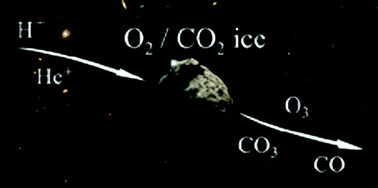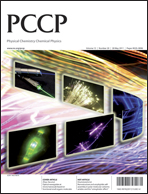The irradiation of pure molecular oxygen (O2) and carbon dioxide (CO2) ices with 5 keV H+ and He+ ions was investigated experimentally to simulate the chemical processing of oxygen rich planetary and interstellar surfaces by exposure to galactic cosmic ray (GCR), solar wind, and magnetospheric particles. Deposited at 12 K under ultra-high vacuum conditions (UHV), the irradiated condensates were monitored on-line and in situ in the solid-state by Fourier transform infrared spectroscopy (FTIR), revealing the formation of ozone (O3) in irradiated oxygen ice; and ozone, carbon monoxide (CO), and cyclic carbon trioxide (c-CO3) in irradiated carbon dioxide. In addition to these irradiation products, evolution of gas-phase molecular hydrogen (H2), atomic helium (He) and molecular oxygen (O2) were identified in the subliming oxygen and carbon dioxide condensates by quadrupole mass spectrometry (QMS). Temporal abundances of the oxygen and carbon dioxide precursors and the observed molecular products were compiled over the irradiation period to develop reaction schemes unfolding in the ices. These reactions were observed to be dependent on the generation of atomic oxygen (O) by the homolytic dissociation of molecular oxygen induced by electronic, Se, and nuclear, Sn, interaction with the impinging ions. In addition, the destruction of the ozone and carbon trioxide products back to the molecular oxygen and carbon dioxide precursors was promoted over an extended period of ion bombardment. Finally, destruction and formation yields were calculated and compared between irradiation sources (including 5 keV electrons) which showed a surprising correlation between the molecular yields (∼10−3–10−4 molecules eV−1) created by H+ and He+ impacts. However, energy transfer by isoenergetic, fast electrons typically generated ten times more product molecules per electron volt (∼10−2–10−3 molecules eV−1) than exposure to the ions. Implications of these findings to Solar System chemistry are also discussed.


 Please wait while we load your content...
Please wait while we load your content...